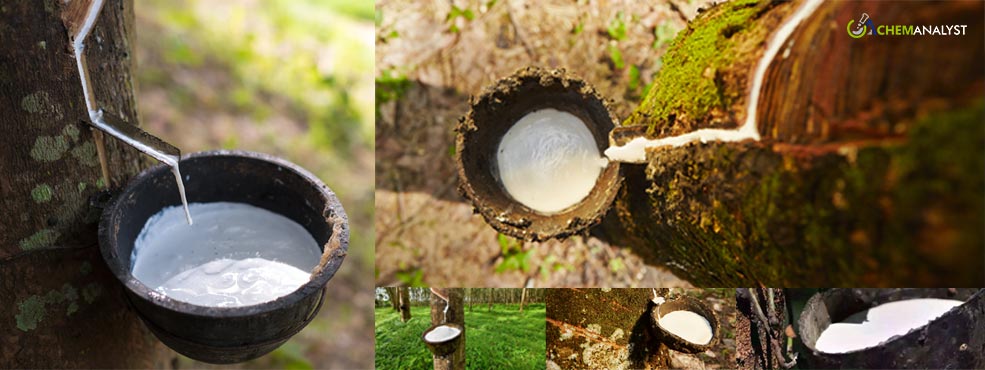Welcome To ChemAnalyst

During April 2025, the Natural Rubber (TSR) market continued to experience a bearish trend for the second consecutive month. The decline in the market sentiments of natural rubber was due to the steady growth of the tapping activities along with the limited demand for the commodity amid the ongoing uncertainty in the market due to the trade tariff.
This month, the major natural rubber-producing countries like Thailand and Indonesia are progressing steadily with their tapping activities. As the main rubber-producing regions around the world begin their new harvesting season, many people are paying attention to how things are going. Since April, the weather in most of the production region has been mostly normal, resulting in a gradual increase in production activities. Although some places have faced problems like plant diseases or dry conditions, overall, the natural rubber tree tapping is going as expected for this time of year.
On the production side, more natural rubber is being harvested in comparison to the previous month, as these production areas are in the transition period of harvesting and are currently in the slow increase stage. A large-scale supply is expected in mid-May. After the Water-Splashing Festival from April 14 to April 15, harvesting activities have picked up in Thailand and other Southeast Asian countries too. Because more natural rubber was collected in comparison to the demand, pressure on the market from the supply side was witnessed, and prices for raw natural rubber were gradually dropping.
On the demand side, limited activities were witnessed. In the major importing nation, China, the market faced challenges selling what they’ve produced. Since new orders have been fewer than expected, some companies have cut back their production. Moreover, amid the ongoing market uncertainty regarding the trade tariff, the natural rubber market was also impacted.
In the US, the downstream automotive sector witnessed a decline in new orders at a slower level, but the export orders fell more sharply amid the ongoing trade tariff disruptions. Furthermore, US manufacturers are facing challenges amid the surging costs along with the ongoing uncertainty which continued to disrupt the supply chains. Simultaneously, buyers were witnessed delaying their orders which resulted in declining business confidence.
According to recent updates from the Association of Natural Rubber Producing Countries (ANRPC), global natural rubber production is expected to grow modestly by 0.4% in 2025 compared to the previous year. This slow pace of growth reflects ongoing challenges in key producing regions. In contrast, global demand for the commodity is expected to surge more significantly by 1.5% in 2025. However, this growth in demand comes amid broader economic uncertainty, including concerns about a global economic slowdown and potential disruptions in trade. These concerns are heightened by the complexity of new U.S. tariffs, which have the potential to impact overseas natural rubber flows. Overall, the imbalance between slower supply growth and stronger demand, coupled with external economic pressures, suggests a tightening global rubber market in 2025.
We use cookies to deliver the best possible experience on our website. To learn more, visit our Privacy Policy. By continuing to use this site or by closing this box, you consent to our use of cookies. More info.
